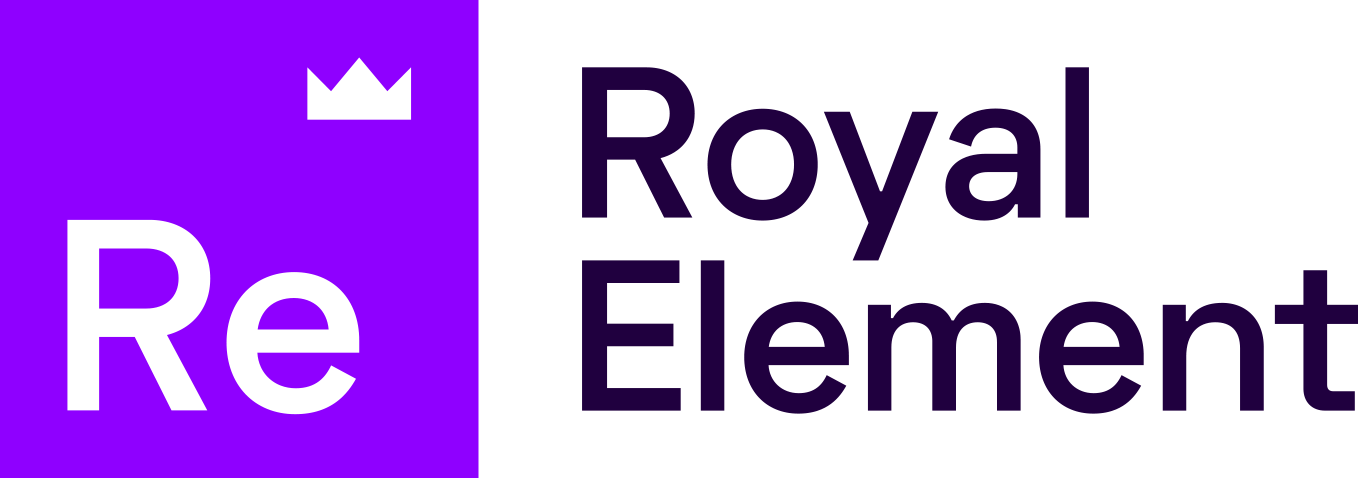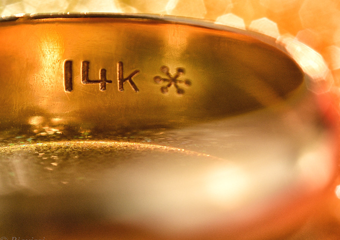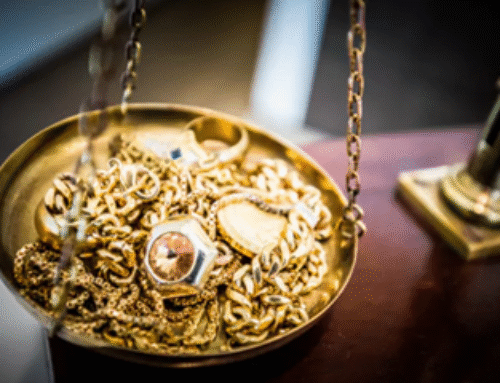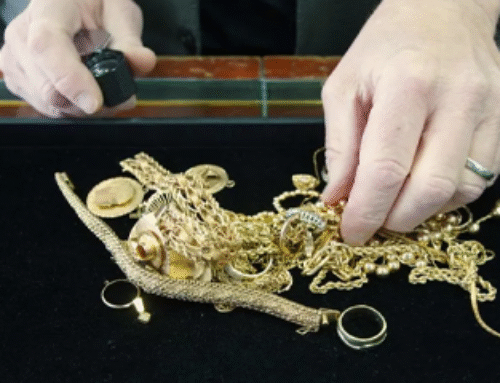For millennia, gold has captivated humanity with its radiant glow and intrinsic value. It’s a symbol of love, a marker of achievement, and a timeless store of wealth. When we handle a piece of gold jewelry, we often see a tiny stamp on it—a hallmark reading “10k,” “14k,” or perhaps “18k.” We understand these marks are important, but what do they truly signify? What is the real difference between a 10-karat ring and a 14-karat one, and why is pure 24-karat gold so revered yet so rarely worn?
Understanding the karat system is the first and most crucial step in appreciating the true nature and value of your gold jewelry. It’s a language of purity, durability, and color. As Five Corners’ most trusted precious metals experts, we at Royal Element believe that an informed client is an empowered one. This guide will demystify the karat system, giving you the knowledge to understand what you own and make confident decisions when it comes to buying, selling, or simply cherishing your gold.
The Origin of “Karat”: A Seed of History
To understand the system, it helps to know where the word “karat” comes from. Its roots stretch back to ancient times and a surprisingly organic source: the carob seed. In the bustling bazaars of the ancient world, merchants needed a consistent and reliable unit of weight to trade precious goods. The humble carob seed, known for its remarkable uniformity in mass, became that standard. One gold “solidus” coin in the time of Roman Emperor Constantine was valued at 24 carob seeds, or “keratia.”
This system of 24 parts became so intertwined with gold that it evolved from a measure of weight to a measure of purity. The idea that pure gold was equivalent to 24 of these units became the foundation for the karat system we use today—a direct and unbroken link to the ancient world.
What is a Karat? The 24-Part Puzzle
Today, a karat is not a measure of weight, but a measure of purity. The system works on a simple scale of 24 parts. When we say a piece of gold is a certain karat, we are describing how many of its 24 parts are pure gold, and how many are other metals.
Think of it like a recipe. A 24-karat gold bar is the pure, core ingredient—100% gold. But because pure gold is incredibly soft, it’s not practical for jewelry that needs to withstand daily life. To make it stronger, other metals (called alloys) like copper, silver, zinc, and nickel are mixed in. The karat designation tells you the precise ratio of pure gold to these alloys.
Here’s the simple breakdown:
- 24 Karat Gold = 24/24 parts gold = 99.9% pure gold
- 18 Karat Gold = 18/24 parts gold = 75% pure gold
- 14 Karat Gold = 14/24 parts gold = 58.3% pure gold
- 10 Karat Gold = 10/24 parts gold = 41.7% pure gold
This percentage of purity is the single most important factor in determining your gold’s melt value. The more gold content, the more valuable the piece is per gram.
Decoding the Karats: A Detailed Comparison
Each karat level offers a unique blend of value, color, and durability. Let’s explore the characteristics of the most common types.
24K Gold (The Pure Standard) This is gold in its most unadulterated form. With a purity of 99.9%, it possesses a deep, rich, almost orange-yellow hue that is unmistakable. When you hold a 24k gold coin or bar, you can feel its significant density and weight. However, this purity comes at the cost of durability. 24k gold is so soft that it can be bent with bare hands and is extremely susceptible to scratches, dents, and warping. For this reason, it is almost never used for wearable jewelry in the Western world. Its primary role is as an investment vehicle—the gold standard for bullion coins like the American Buffalo or the Canadian Maple Leaf, and for gold bars stored in vaults around the globe.
14K Gold (The Perfect Balance) In the United States, 14k gold is king. Comprising 58.3% pure gold and 41.7% alloys, it strikes the perfect balance between beauty, durability, and value. The presence of strong alloy metals makes 14k jewelry highly resistant to the scratches and dings of everyday wear, making it an ideal choice for engagement rings, wedding bands, and any piece meant to be worn regularly. Its color is a bright, warm yellow that has become the classic representation of gold for many people. For both consumers and sellers, 14k gold represents a fantastic middle ground—it contains a substantial amount of pure gold while providing the strength needed for a long-lasting, cherished piece of jewelry.
10K Gold (The Durable Contender) Containing 41.7% pure gold and a significant 58.3% of strengthening alloys, 10k gold is the most durable type of gold commonly found in the market. It is the legal minimum standard to be called “gold” in the United States. The higher alloy content makes it exceptionally tough and resistant to wear and tear, making it a practical choice for class rings or pieces subjected to a more active lifestyle. This higher alloy content also gives 10k gold a slightly paler yellow hue when compared to 14k gold. While its intrinsic gold value is lower due to the reduced purity, its durability and more accessible price point make it a very popular and practical option.
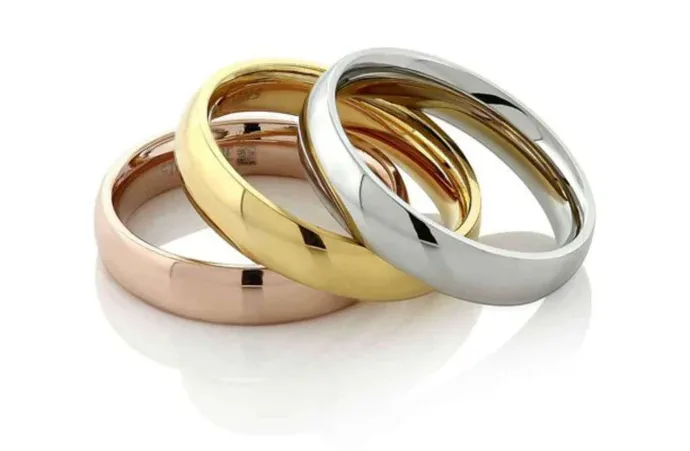
The Role of Alloys: More Than Just Strength
The metals mixed with gold do more than just add strength; they are instrumental in creating the different colors of gold we see today. The specific combination of alloys is a science in itself:
- Yellow Gold: The classic color is achieved by mixing pure gold with a combination of silver and copper, which preserves its natural sunny hue.
- White Gold: To create a silvery-white appearance, gold is alloyed with white metals like nickel, palladium, or silver. It is then often plated with rhodium for a brilliant, highly reflective surface.
- Rose Gold: This popular, warm pinkish hue is created by incorporating a higher percentage of copper into the alloy mix. The more copper, the redder the tone.
This demonstrates that the non-gold parts of your jewelry are not just “filler,” but carefully selected ingredients that define the final character and strength of the piece.
Conclusion: What Your Karat Means for You
Understanding the karat system transforms you from a casual owner into an informed connoisseur of your own collection. It tells you about your jewelry’s history, its resilience, and, most importantly, its intrinsic value. Whether it’s the durable 10k gold of a cherished family ring, the perfectly balanced 14k gold of your wedding band, or a 24k investment coin, the karat is the key to its story.
Here at Royal Element in Vancouver, this understanding is the foundation of our business. Our expert staff uses this knowledge along with state-of-the-art technology to provide a fair, transparent, and accurate appraisal for every piece that comes through our door. We recognize the unique properties of each karat and ensure our offer reflects its true value in today’s historic market.
We invite you to bring your 10k, 14k, or any other precious metal items to our secure Vancouver location. Let our experts help you decipher their story and discover their full potential.
